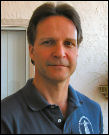
|
WCID
12 Pres. Matt Wiggins now Kemah City Councilman, found Designer and
lens preservationist Dan Spinella in Florida and arranged for him to
"Create" the Lens for the new WCID 12 Water Tower/Lighthouse. Here is a
brief summary of the Fresnel lens that was installed in the Kemah
Lighthouse.
 Dan Spinella |
The
lens is a 3rd order rotating Fresnel lens
replica. It
was modeled after the historic Fresnel lenses that were common in |
I designed the lens. My company name is Artworks
Casino Gambling Returns
To Kemah – One Night Only!
Casino gambling will return to Kemah! Yes, but gambling returns for one night only as a fundraiser for the Kemah Historical Society, Sept. 9 at the Kemah Community Center, Highway 146 at 8th St. Doors will open at 6:30 p.m. and the gaming tables will open at 7 p.m.
From the 1920s through the 1950s, Kemah was a hot bed of casino gambling. Gambling played a large part in the city’s history. So, directors of the Kemah Historical Society thought a night of gambling was a natural for their fundraiser. Roaring ‘20s attire is encouraged.
Attendees can get that nostalgic Kemah feel playing Texas Hold ‘Em Poker, Blackjack and Craps. The tables will be operated by Monte Carlo Associates, Inc., professional gaming operators for charitable events.
Tickets for the event are $20 per person in advance and $25 per person at the door. Ticket gives each attendee $1,000 in play money and hors d’oeuvres. There will be a cash wine and beer bar. Tickets are available by contacting Pepper Coffey, event chairman, at 281-334-2398 or PepCoffey@hotmail.com.
There will be a raffle and a live auction of donations from Kemah merchants and other supporters. The Kemah Historical Society is a 501©(3) non-profit organization. All proceeds from Casino Night will benefit the society whose mission is preserving the history of Kemah. For more information, the group’s web address is www.kemahhistoricalsociety.net.
© ®™